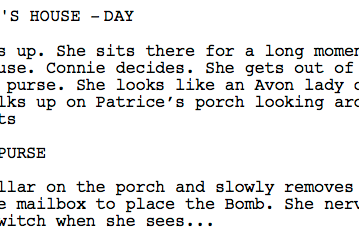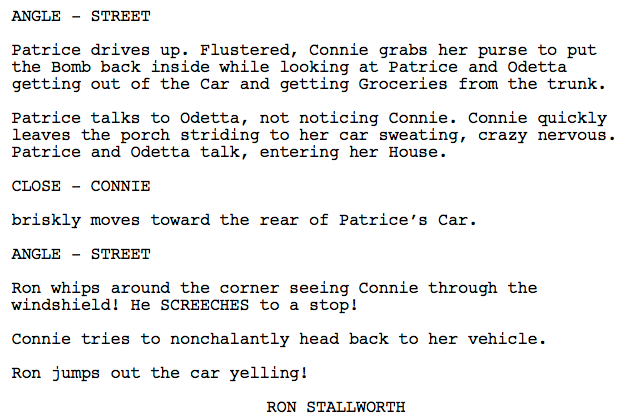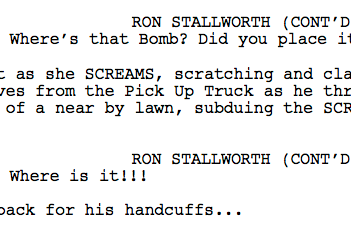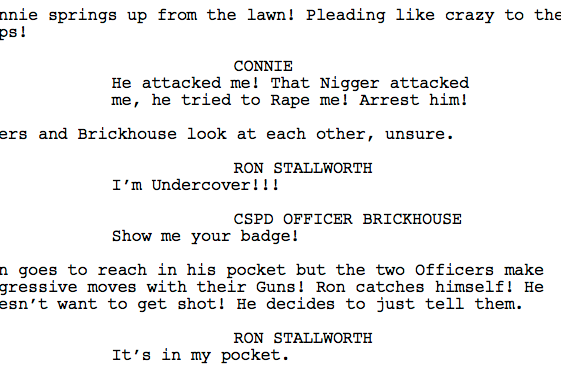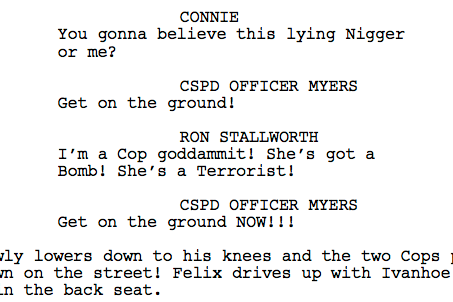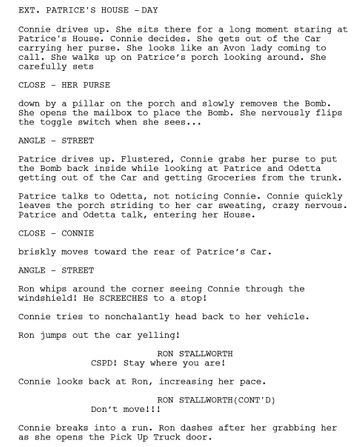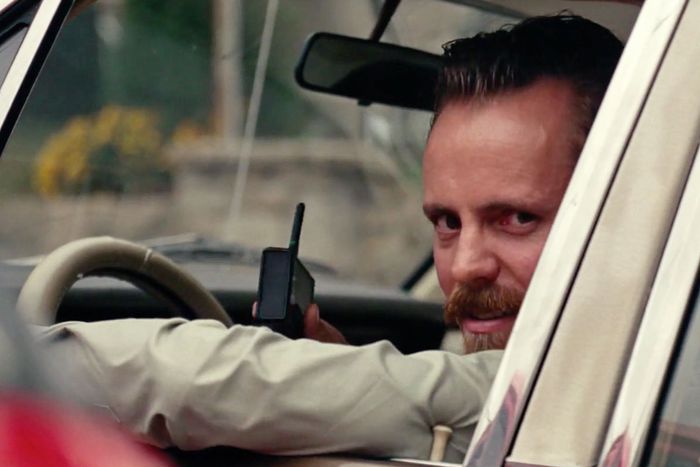
Once again, Vulture is speaking to the screenwriters behind the awards season’s most acclaimed movies about the scenes they found most difficult to crack. For this installment, Kevin Willmott, co-writer of Spike Lee’s BlacKkKlansman, discusses the movie’s climactic confrontation, which involves detective Ron Stallworth (John David Washington), his partner Flip (Adam Driver), his girlfriend Patrice (Laura Harrier), white-supremacist housewife Connie (Ashlie Atkinson), a bomb, and a car full of Klansmen. It’s a scene that doesn’t appear in the real Stallworth’s memoir, and its invention necessitated every one of the film’s plot threads converging on a single location — a notoriously difficult exercise for fiction writers of all stripes.
I did a lot of work on the third act of the film. The third act was probably the hardest thing because it’s the element that is not in the book. In reality, the Klan were going to blow up a gay nightclub, and Ron did such a good job that those guys weren’t able to get away with anything. But we had to have a climax, we had to have a payoff. So we took the spirit of what actually happened, but in our film it’s the Black Student Union house, then Patrice’s house. You’re always putting those parameters on yourself. You have to make certain creative choices, but you don’t want them to be arbitrary.
The thing that made it so difficult was that several different things had to come together in one scene at the same time. I had to connect Patrice, with her being Ron’s love interest and also an activist. We needed to pay off Connie’s husband and the Klan members. I needed Ron to come and “save the day.” And Flip, Adam Driver’s character, had to connect in that scene as well.
The big challenge of it was to really figure out that order, to make sure that it was going to work as the climax of the film. I worked on it for about a week. I kept developing the idea and I shared it with a few friends. It was just a whole thing of getting all the elements to coalesce at the same time. It wasn’t so much that I wrote a lot of drafts, but I worked on the structure of it in my head for several days, almost like a storyboard.
The target was originally going to be the Black Student Union, and then when I came up with this thing of how the bomb was not going to work, I moved it to Patrice’s house. It just needed to be more isolated. We had to isolate Ron, we had to isolate the Klan members, we had to isolate Connie. It needed to be away from all the activity of the Black Student Union. You want it to be more isolated so all this can transpire, where he can have the confrontation with Connie on the street and no one will come to his rescue.
One of the big things I had to figure out was the bomb. We were thinking about ’70s movies a lot during the writing. I just wanted to make sure that kind of technology was around in the ’70s. I remembered there was a scene in Magnum Force, the old Clint Eastwood movie, where the bad guys put a bomb in a mailbox. They did it back in that old movie, so I’ll try again in a different way here. I’m gonna have her go and try to put the bomb in the mailbox and the C4’s going to be too big to fit in the mailbox, so she goes to the backup plan, which is to put it next to the car.
I knew the idea was first to blow the house up, and because the mailbox doesn’t work she goes to plan B, which is the car. So with each step of the way, I had to figure out how they were all going to connect: how the Klan members were going to drive up and see Connie being arrested and decide to blow it up … What made it so tricky was that you want it to be really dramatic, you want it to be suspenseful, you want to be on the edge of your seat. One false step and you don’t buy it.
This is the big suspense moment of the film. It’s the big payoff of everything, and if the audience is ahead of Ron we’re sunk. That was the big fear, that the audience was going to figure out what happens before it happened. That’s why I spent so much time figuring out the order of it, because the order had to ensure that the audience didn’t figure it out before Ron’s character did. The audience has to be either right with Ron or right behind Ron, but they can’t be ahead of Ron.
There were a lot of little beats that make it work. One of the tricky ones is the beat when Ron shows up and sees Connie and she’s already planted the bomb, but he doesn’t know where. And the use of the police driving up and arresting Ron, that allows the rest of it to happen. That was one of the last things I added. It raised the stakes a little more.
And what was great about that was that that’s another example of what the movie is about. It’s not an arbitrary kind of use of the police. It’s thematically connected to the rest of the film, in terms of police misconduct. But you’ve got to believe the police would do that for it to work.
I was a little fearful of this beat because I didn’t want it to be an Oh, here they go again moment, in terms of race. It had to be believable. I think a lot of it was Ashlie’s performance. She’s so great in the film that you just believe it. You believe the police would believe her and not Ron. And I think it added this other element to the tension of that moment — the audience is pulling for Ron to stop the bombing, and here he gets sidetracked into this whole thing.
With this section specifically, I worked on it and did my whole draft. Then I sent it to Spike and he did his draft, and then we went back and forth like that. With this scene, he really liked what I did on it, and I think he contributed to the police coming in and trying to arrest Ron in that whole moment. It was my choice that he got arrested, but he added elements to it. I think he brought up Ron’s frustration a little more, which is the key that makes that moment work.
I think Spike added that the police would profile him and see him as a threat instead of a policeman. Spike and I both kind of have an unspoken understanding of the reality of American life, and you try not to make choices that are just unbelievable. I believe right as we were writing it, a black policeman was shot by other policemen in a situation like this in the United States. That has happened a lot with black policemen, where they’re identified as suspects instead of police and are either arrested or shot. Spike and I both knew these things happen all the time. They especially happened back then, but they’re still happening today.
We knew we wanted the Klan members to bite it. They were gonna meet their maker. At the same time, we didn’t want a big shootout. We weren’t interested in any of that kind of crap. Spike doesn’t really do that, and that’s one of the things I admire a lot about him. He doesn’t do violence for just the spectacle of it. We do in the bad guys, but they kind of do themselves in. We wanted the hate to kill them.
Below, read the scripted version of the scenes:
Now see how the scene plays out in the finished film:



